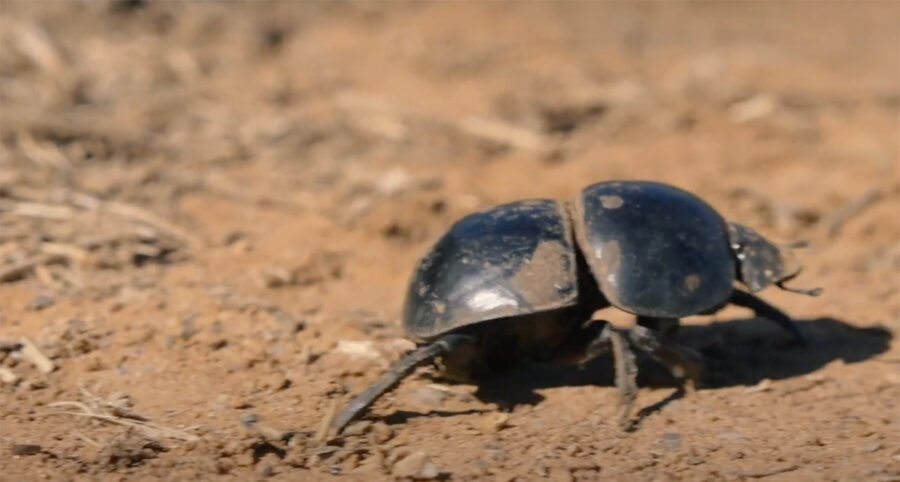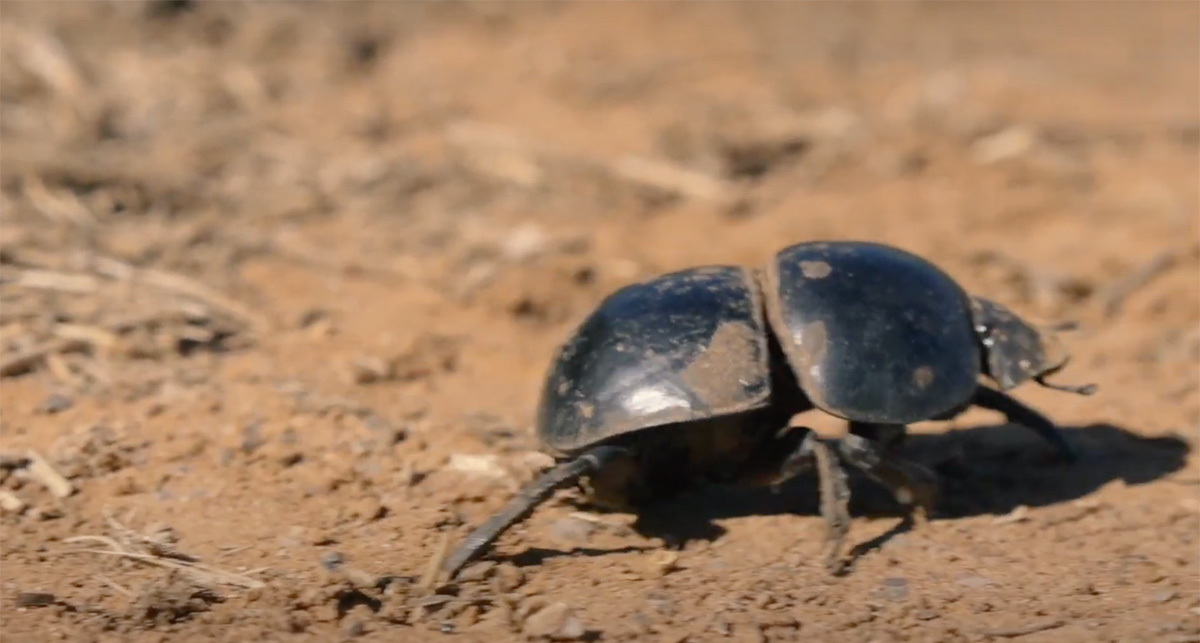
Flightless Dung Beetle and Humble Oxpecker Star in World Environment Day TV special
On World Environment Day yesterday two unlikely protagonists, the Addo flightless dung beetle and the oxpecker, featured in a short film about the impact of unsustainable human activity on fragile ecosystems and how these can be restored. The film is a World Environment Day special, created for Shamwari TV, which uses the story of the […]

On World Environment Day yesterday two unlikely protagonists, the Addo flightless dung beetle and the oxpecker, featured in a short film about the impact of unsustainable human activity on fragile ecosystems and how these can be restored.
The film is a World Environment Day special, created for Shamwari TV, which uses the story of the Eastern Cape private game reserve, to show how interconnected ecosystems are easily destroyed and the complexity of slowly rebuilding them.
Free-roaming black rhino in the Eastern Cape were exterminated by 1853. In 1873 the true quagga followed and is now permanently extinct. Free-roaming Cape lion disappeared from the area in 1879 and cheetah in 1888. Hippos followed in 1903 and by 1919 there were no more free-roaming brown hyena.
Fortunately, the last 11 elephants were saved when Addo Elephant Park was proclaimed in 1931 to protect them.
Shamwari head ranger, Andrew Kearney, explains that just over sixty years later Shamwari began buying farmland, taking down the fences and reintroducing indigenous animals, amongst them, elephant, white rhino and hippo. Black rhino and buffalo followed in 1993/4, with cheetah, Lion and brown hyena being brought back in 2000 and serval and leopard in 2001.

As the first animals began moving through what had been chicory and wheat fields, these ‘engineers of the bush’ began repairing some of the plough damage, fertilising the soil with their manure and dispersing seeds. This in turn saw some of the hardier plants return, stabilising the soil for grasses and later woody bushes.
Of course, this all takes time and although some flora recovers reasonably quickly other species can take up to a century. Nearly three decades later some of the damage resulting from intensive agriculture can still be clearly seen in the film.
The impact on the Addo flightless dung beetle and oxpecker
To further explain ecosystem’s complex interdependence Kearny tells how the extermination of large game, specifically elephant and buffalo, also impacted smaller species, such as the Addo flightless dung beetle, which is dependent on the dung from these animals for food and nesting.

When these animals disappeared from the area, the beetle lost its range and was limited to just a small area in Addo. To ensure a complete and healthy ecosystem, in 1997 the Addo flightless dung beetle was reintroduced to Shamwari.
Another example is the oxpecker. As the natural wildlife disappeared from the area there was less for the oxpeckers to feed on. Although domestic cattle also carry the ticks and external parasites that these birds eat, to prevent parasitic-borne diseases, farmers dipped their herds in arsenic-based dips. This soon meant the demise of the oxpeckers.
When Shamwari reintroduced larger game such as rhino, buffalo and antelope they realised they’d also need the oxpeckers to control the external parasites. Initially, fifty birds from the Kruger National Park were released and the population has since increased exponentially.
WATCH The World Environment Day Special:
Like the dung beetles, the population of oxpeckers are an indicator of the health of the ecosystem.
it is the small decisions that all of us make which can and do have an impact on our environment.
Kearney says that while reintroducing flora and fauna and restoring ecosystems is a massive and hugely expensive undertaking, it is the small decisions that all of us make which can and do have an impact on our environment.
For World Environment Day he urges all the Shamwari TV viewers to consider this.
